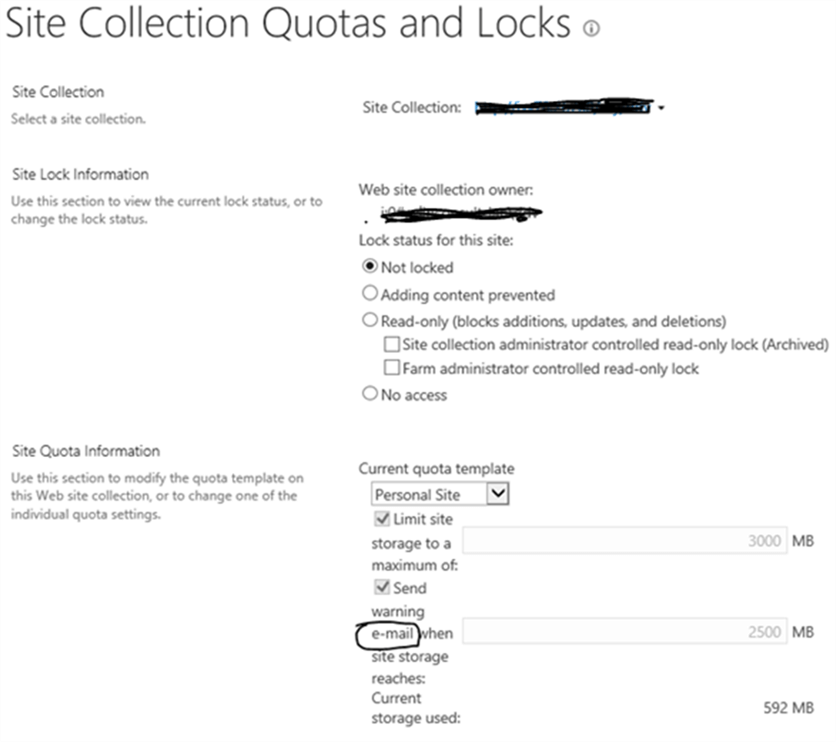By: Deepak Kumeri | Comments (2) | Related: > SharePoint
Problem
What things should I know about to plan SharePoint Site Collection Governance?
Solution
SharePoint governance is a set of rules created to run SharePoint in an orderly and secure manner. SharePoint governance can be applied to a SharePoint farm or even to a single document being uploaded. Itís essential to have a well-written governance plan for SharePoint. Though SharePoint governance is a vast topic, I will be concentrating on site collection governance. Most would probably agree that a site collection is the end product of SharePoint. It’s what users use. For this reason, I will focus on site collection governance.
As a SharePoint administrator, I have seen farms with content ranging from a few gigabytes to many terabytes of data, and I have worked with many site collection administrators. Most of the time, unfortunately, I didn’t see any governance applied to their site collections. Let me stress this again: It’s imperative to develop a governance plan for site collections. Of course, every corporation may take their own approach to creating a governance plan, involving: SharePoint farm administrators, site collection administrators, and business users. Below, I will offer a few tips for good site collection governance.
Permissions
As a site collection administrator, you need to manage permissions in an orderly and secure way. Sometimes important data can be compromised due to incorrect permissions. Always add users to a SharePoint permission group instead of granting explicit access to them. For example, if you want to add a user as a contributor, you should add the user to the Test2 Members group as shown below in site permissions image.

Try to maintain minimum inheritance. Inheritance by default is applied to all sites, lists, and libraries. It means that the same permissions will work everywhere inside a site collection. Many times, of course, there is a need for unique permissions in a list or a document library. But try not to break inheritance too often for unique permissions, as it will lead to more work for administrators, and it will make the site more complex security-wise.
Follow the least-privilege rule. Grant the minimum access that a user requires in order to perform their job. If a user needs access to a sub site, you should grant them permission to only that sub site—not to the whole site collection.
Site collection storage limit
Microsoft recommends a maximum site collection size of 100 GB. This is because large amounts of data make some tasks difficult for administrators. For example, you can’t perform backup and restore of a site collection if its size is greater than 100 GB. Similarly, if you want to use Move-SPSite, it won’t move a site of that size from one content database to another. A good way to monitor site collection size is by limiting site storage from central administration (as shown below in the site collection quota and locks image). Also, you can set up an email notification when your site limit is approaching the site collection maximum storage.

Data backup and recovery
In the event of SharePoint farm failure, how will you deal with it and what will be your plan to bring back SharePoint back online? Different organizations have different needs, budgets and timelines. As per their requirements, they can implement from a cold stand by to a hot stand by for the disaster recovery plan. Always make sure that you know the time line, when your site collection will become available to users.
SharePoint farm administers have a duty to make sure that there’s a disaster recovery plan in place and that there are daily backups. A quarterly (or in every six months) disaster-recovery exercise can be helpful to make sure that you will be able to recover data in a timely manner.
Site creation and site responsibilities
It may seem convenient to give every user the ability to create sub sites—but imagine the consequences: Users might create unlimited sites. The site collection would run out of storage. And many sites mean a ton of maintenance work, and they can lead to critical permission issues.
It’s a good idea to give responsibilities to a group of users and create some policies. For example:
- Who should be able to create sites?
- Who should manage sub sites?
- How will your content retention policy work?
There should be a couple of users you can contact in case of troubleshooting issues and who then can contact the SharePoint administrator. Train users thoroughly in the functionality of SharePoint relating to their jobs. For example: Teach them how to upload documents, how to work with document versions, and how to search content.
Site customization
One of the biggest issues we face while migrating from older to newer versions of SharePoint is customization. Everyone wants their site to have a specific layout and design. The most common customizations involve site branding, custom web parts, site templates, and changing pages through SharePoint designer.
There should be a limit to site customization and specific guidelines. For example, you want to set a site template in order to create all sites according to the template. This template will be customized according to your preferred look and feel. And anyone creating a new site should use this template to carry the look and feel consistently through the portal. Also, make sure you keep track of all customizations and which group of users you’re allowing to do so.
Deployment Policies
SharePoint is a collaborative tool, and we upload documents or create lists on a daily basis. So, why do we need deployment policies for a site collection? Here, we’ll take the scenario of deploying a custom wsp solution to a SharePoint farm and activating a feature on a site collection level.
Now, when we deploy wsp in a SharePoint farm, the application pool will restart. Because of this, the site collection won’t be available for that period. That’s why we need a deployment policy. You can set a day during the week and process for deployments (wsp, branding, data changes etc.). There will more instances when site collection or pages won’t be available to users.
Next Steps
- How to plan disaster recovery https://technet.microsoft.com/en-us/library/ff628971.aspx.
- Understand permission levels in SharePoint https://technet.microsoft.com/en-us/library/ff628971.aspx.
- More SharePoint tips.
About the author
 Deepak Kumeri is a senior SharePoint Administrator and with experience in MOSS 2007, SharePoint 2010, 2013, 2016 and SharePoint online.
Deepak Kumeri is a senior SharePoint Administrator and with experience in MOSS 2007, SharePoint 2010, 2013, 2016 and SharePoint online.This author pledges the content of this article is based on professional experience and not AI generated.
View all my tips






